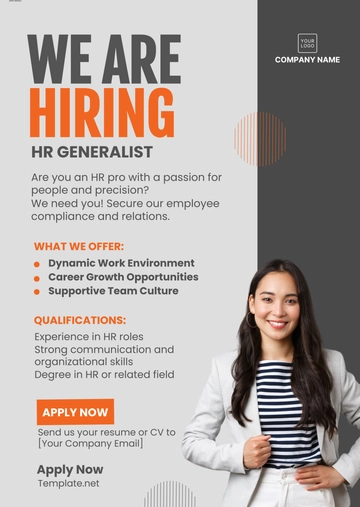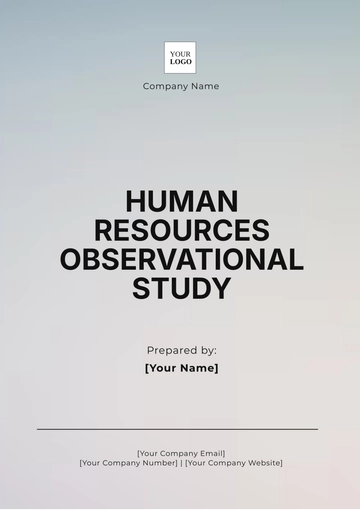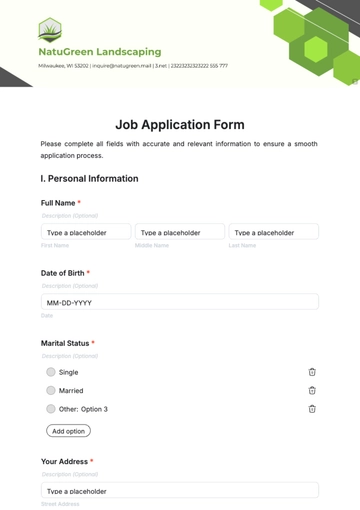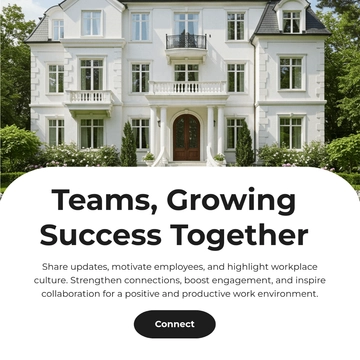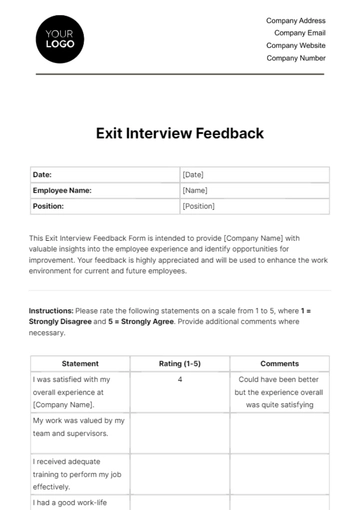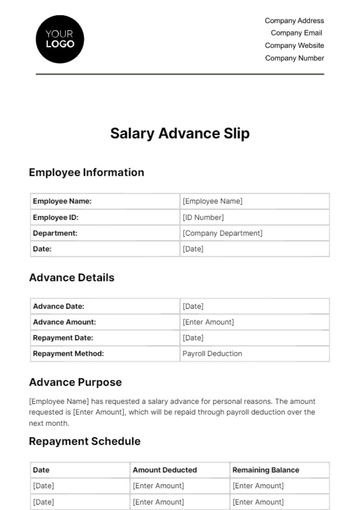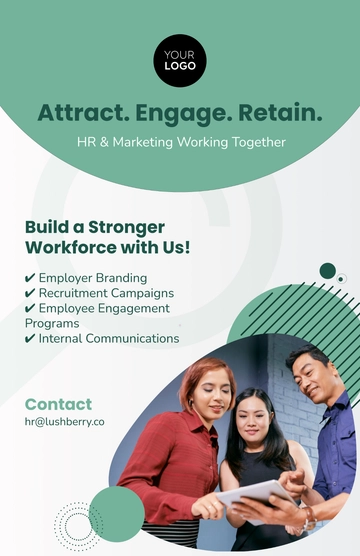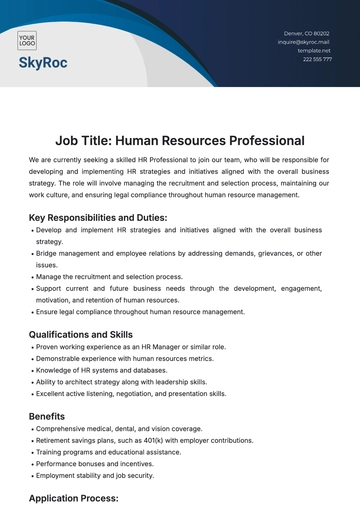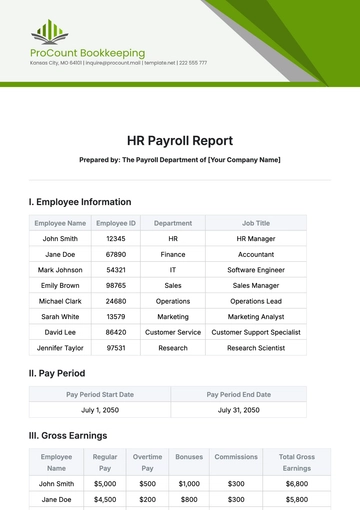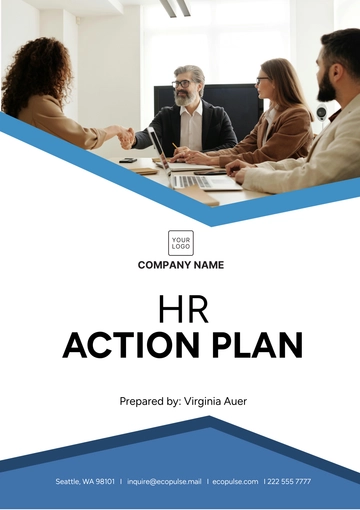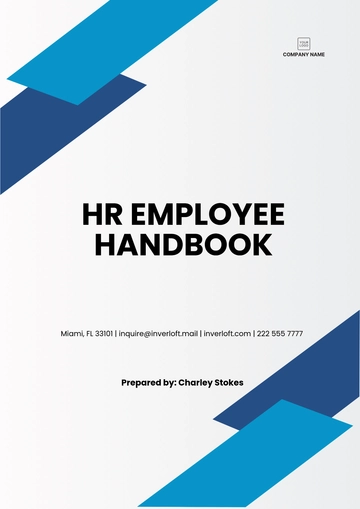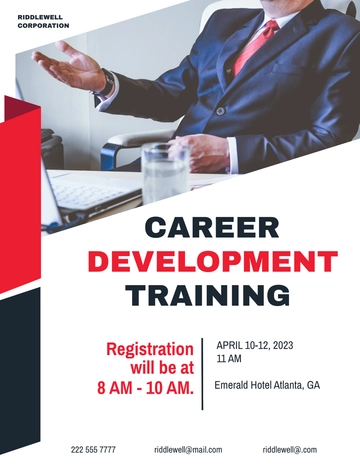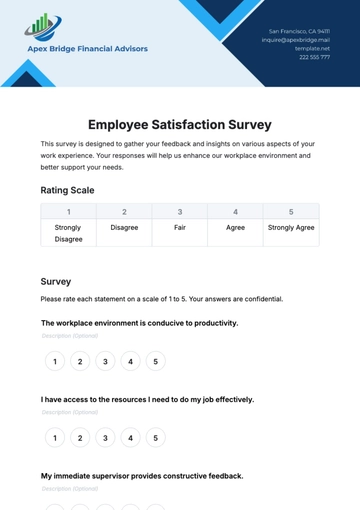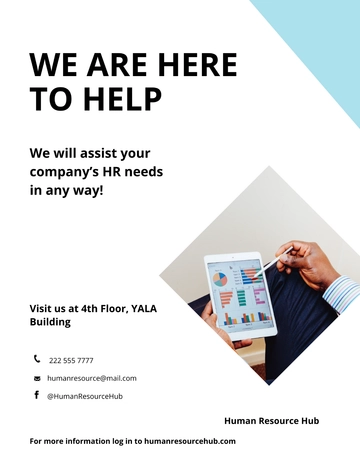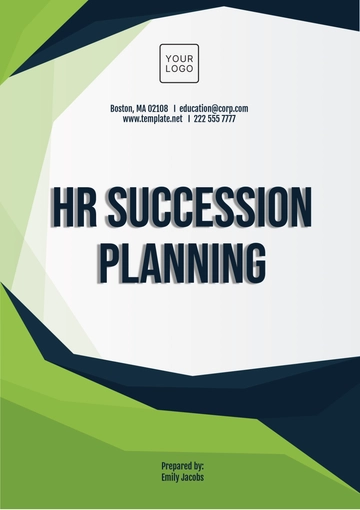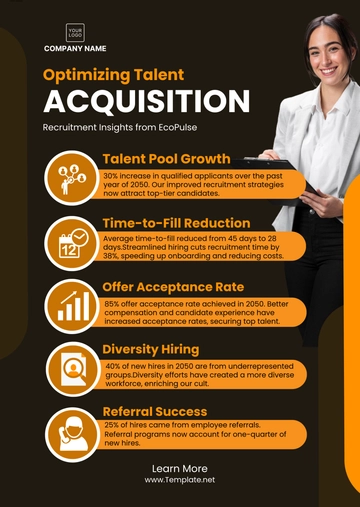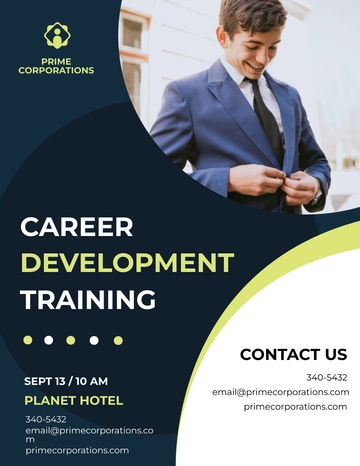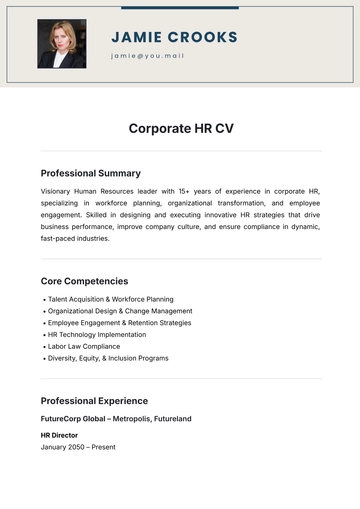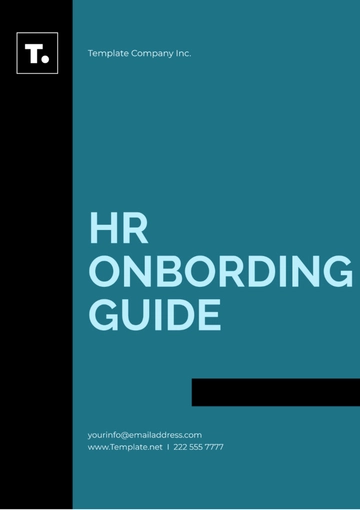Free HR Succession Planning
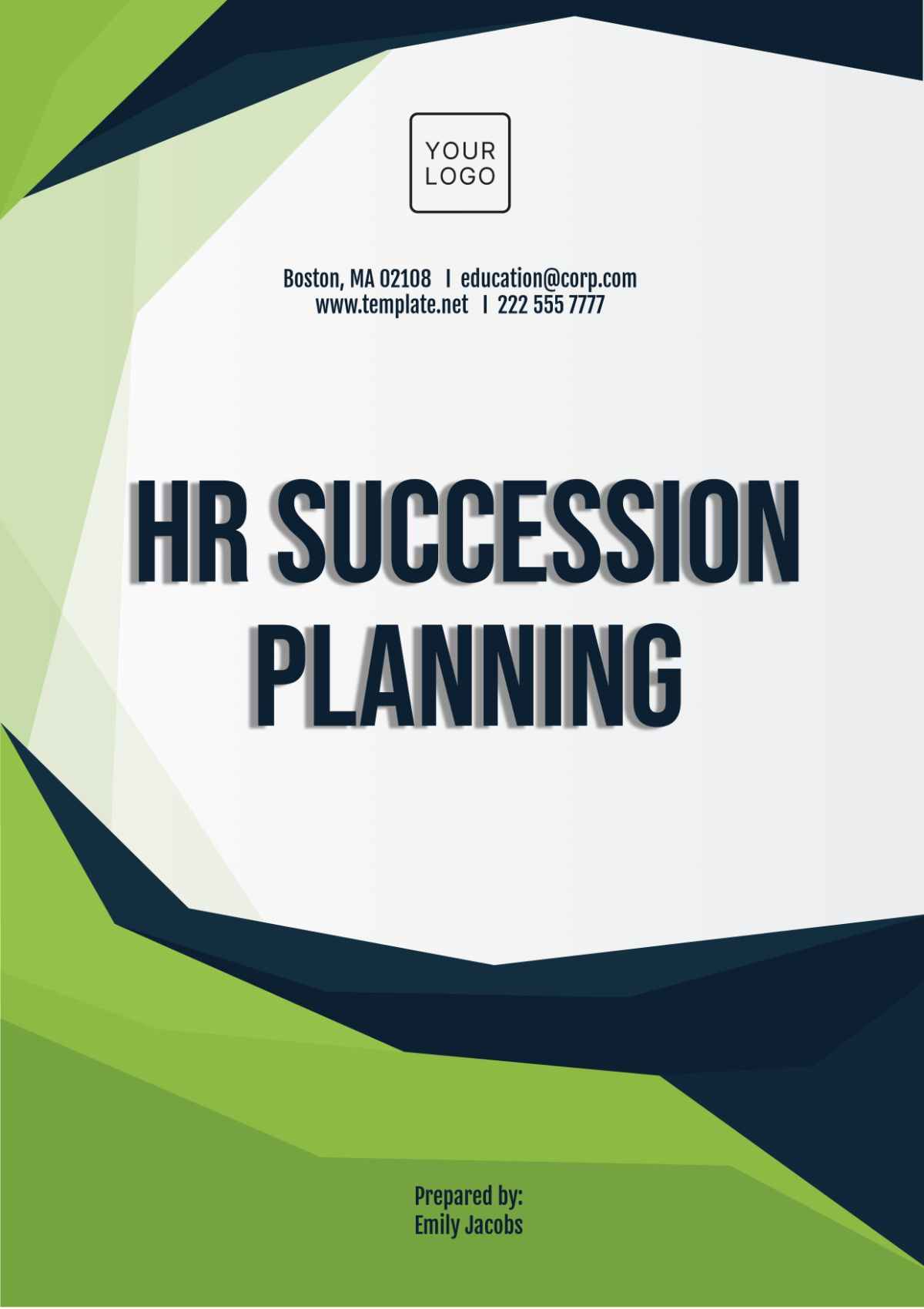
1. Introduction
1.1 Overview
Succession planning is a crucial strategic process for ensuring that [Your Company Name] continues to thrive and grow by preparing for the future leadership needs of the organization. It involves identifying and developing internal personnel to fill key positions in the event of a vacancy or retirement, ensuring a smooth transition and continuity in leadership and critical roles.
1.2 Importance of Succession Planning
Effective succession planning is essential for maintaining organizational stability and achieving long-term success. It mitigates the risks associated with unexpected departures, enhances employee retention by providing clear career paths, and aligns with the company's strategic goals. As we approach 2050 and beyond, succession planning will become increasingly vital due to the evolving business landscape and the need for adaptive leadership.
2. Objectives
2.1 Long-Term Goals
The primary objectives of succession planning at [Your Company Name] are:
Ensuring Leadership Continuity: Developing a pipeline of qualified candidates ready to step into leadership roles, minimizing disruptions in critical functions.
Enhancing Employee Engagement: Providing employees with clear career development opportunities and growth pathways, thereby increasing job satisfaction and retention.
Aligning with Strategic Vision: Ensuring that the succession plan supports the company's long-term strategic goals and objectives, preparing the organization for future challenges and opportunities.
2.2 Immediate Goals
In the short term, our objectives include:
Identifying Key Positions: Determining which roles are critical to the company's operations and will require succession planning.
Assessing Talent Pools: Evaluating the current talent within the organization to identify potential successors and development needs.
Implementing Development Programs: Designing and launching programs to prepare high-potential employees for future leadership roles.
3. Succession Planning Process
3.1 Step 1: Identify Key Positions
3.1.1 Definition of Key Positions
Key positions are roles critical to the company's operations, strategic goals, and overall success. These typically include:
Executive Leadership: CEO, CFO, COO, etc.
Strategic Roles: Heads of key departments or divisions.
Specialized Positions: Roles requiring unique skills or knowledge essential to the company’s competitive advantage.
3.1.2 Criteria for Identification
To identify key positions, consider:
Impact on Operations: Roles that are crucial for day-to-day operations and business continuity.
Strategic Importance: Positions that directly influence the company’s strategic direction and growth.
Complexity and Expertise Required: Roles requiring specialized skills or knowledge that are not easily replaced.
3.2 Step 2: Assess Talent Pool
3.2.1 Current Talent Assessment
Evaluating current employees involves:
Performance Reviews: Analyzing past performance evaluations to gauge strengths, areas for improvement, and potential.
Skills and Competencies: Assessing employees’ skills and competencies against the requirements of key positions.
Career Aspirations: Understanding employees’ career goals and readiness for increased responsibilities.
3.2.2 Talent Mapping
Talent mapping helps to:
Identify Potential Successors: Determine which employees have the potential to fill key positions based on their skills, experience, and career aspirations.
Development Needs: Identify gaps in skills or experience that need to be addressed to prepare candidates for future roles.
3.3 Step 3: Develop Talent
3.3.1 Training and Development Programs
To prepare potential successors, implement:
Leadership Training: Programs designed to develop leadership skills and competencies required for executive roles.
Mentorship and Coaching: Pairing high-potential employees with experienced mentors to provide guidance and support.
Job Rotation and Stretch Assignments: Providing opportunities for employees to gain experience in different roles or departments to broaden their skill sets.
3.3.2 Career Development Plans
Create individual career development plans that include:
Short-Term Goals: Specific, achievable objectives to help employees progress toward their desired roles.
Long-Term Goals: Strategic objectives aligned with the company’s succession planning needs.
Regular Reviews: Frequent assessments to track progress and adjust development plans as needed.
3.4 Step 4: Implement Succession Plan
3.4.1 Communication Strategy
Effective communication is key to successful implementation. This includes:
Internal Communication: Informing employees about the succession planning process and their role in it.
Stakeholder Engagement: Keeping key stakeholders, such as senior management and board members, informed and involved in the succession planning process.
3.4.2 Transition Planning
Develop detailed transition plans for key positions that include:
Timeline and Milestones: Establishing a timeline for transitioning roles and key milestones to ensure a smooth handover.
Knowledge Transfer: Implementing processes for transferring critical knowledge and responsibilities to successors.
Support Mechanisms: Providing support to both the departing and incoming employees to facilitate a successful transition.
3.5 Step 5: Monitor and Evaluate
3.5.1 Performance Metrics
To assess the effectiveness of the succession planning process, track:
Successor Readiness: Evaluating how well prepared potential successors are for their future roles.
Retention Rates: Monitoring employee retention rates and the impact of succession planning on retention.
Leadership Effectiveness: Assessing the performance of new leaders in their roles.
3.5.2 Continuous Improvement
Ensure ongoing improvement by:
Regular Reviews: Conducting regular reviews of the succession planning process to identify areas for enhancement.
Feedback Mechanisms: Gathering feedback from employees and stakeholders to refine the succession planning approach.
Adapting to Changes: Adjusting the succession plan in response to changes in the business environment or organizational strategy.
4. Succession Planning Framework
4.1 Framework Overview
The succession planning framework at [Your Company Name] is designed to be a comprehensive and flexible model that aligns with the company’s strategic objectives and supports the development of internal talent. It consists of:
Succession Planning Strategy: A high-level plan that outlines the goals, processes, and policies for succession planning.
Talent Development Programs: Initiatives aimed at preparing employees for future leadership roles.
Monitoring and Evaluation Mechanisms: Systems for tracking progress and assessing the effectiveness of the succession planning process.
4.2 Succession Planning Policies
4.2.1 Policy Guidelines
Key policy guidelines include:
Equal Opportunity: Ensuring that succession planning practices are fair and equitable, providing opportunities for all employees regardless of their background.
Confidentiality: Maintaining confidentiality of succession planning information to protect the interests of employees and the organization.
Compliance: Adhering to legal and regulatory requirements related to succession planning and employee development.
4.2.2 Policy Implementation
Implementing policies involves:
Policy Communication: Clearly communicating policies to employees and managers.
Training and Awareness: Providing training to ensure that all stakeholders understand and adhere to the policies.
4.3 Roles and Responsibilities
4.3.1 HR Department
The HR department is responsible for:
Facilitating Succession Planning: Coordinating the succession planning process and supporting the development of talent.
Providing Resources: Offering resources and tools to assist with succession planning and talent development.
Monitoring and Reporting: Tracking progress and reporting on the effectiveness of succession planning initiatives.
4.3.2 Managers and Leaders
Managers and leaders are responsible for:
Identifying Talent: Recognizing potential successors and providing them with growth opportunities.
Supporting Development: Mentoring and coaching high-potential employees to prepare them for future roles.
Feedback and Evaluation: Providing feedback and evaluating the performance of successors and development programs.
5. Case Studies and Best Practices
5.1 Case Study 1: Successful Succession Planning at [Company A]
5.1.1 Background
[Company A] implemented a robust succession planning program that focused on developing internal talent and ensuring leadership continuity. Key elements included:
Talent Identification: Using a structured process to identify high-potential employees.
Development Programs: Offering targeted training and development opportunities.
Monitoring and Evaluation: Regularly assessing the effectiveness of the succession planning process.
5.1.2 Results
The results of [Company A]'s succession planning program included:
Increased Leadership Continuity: Smooth transitions in key leadership roles with minimal disruption.
Enhanced Employee Engagement: Higher levels of employee satisfaction and retention.
Improved Organizational Performance: Achieving strategic goals and maintaining a competitive edge.
5.2 Best Practices
5.2.1 Best Practice 1: Regular Succession Planning Reviews
Conducting regular reviews of the succession planning process to ensure it remains aligned with the company’s strategic objectives and adapts to changes in the business environment.
5.2.2 Best Practice 2: Comprehensive Talent Development Programs
Developing comprehensive talent development programs that include leadership training, mentorship, and job rotation to prepare employees for future roles.
5.2.3 Best Practice 3: Transparent Communication
Maintaining transparent communication about succession planning initiatives to keep employees informed and engaged in their career development.
6. Future Trends and Considerations
6.1 Emerging Trends
6.1.1 Technological Advancements
Advancements in technology, such as artificial intelligence and data analytics, will play a significant role in succession planning by providing insights into talent management and predicting future leadership needs.
6.1.2 Changing Workforce Demographics
The evolving demographics of the workforce, including the increasing diversity and the rise of new generations, will impact succession planning strategies and require more inclusive approaches.
6.2 Considerations for 2050 and Beyond
6.2.1 Adapting to Future Challenges
As we look toward 2050, [Your Company Name] will need to adapt its succession planning strategies to address emerging challenges, such as:
Globalization: Managing succession planning in a global context with diverse talent pools.
Technological Disruptions: Preparing for the impact of technological advancements on leadership roles and skills requirements.
Sustainability and Corporate Responsibility: Incorporating sustainability and corporate responsibility into succession planning to align with evolving societal expectations.
6.2.2 Strategic Alignment
Ensuring that the succession planning process remains aligned with the company's long-term strategic goals and objectives, including:
Innovation: Supporting innovation and agility through effective leadership transitions.
Growth and Expansion: Preparing for leadership needs related to growth and expansion into new markets.
7. Conclusion
Succession planning is a critical component of [Your Company Name]'s strategic framework, ensuring that we are prepared for future leadership needs and maintaining organizational stability. By following a comprehensive succession planning process, developing internal talent, and adapting to future trends, we can achieve long-term success and continue to drive the company's growth and development.
Effective succession planning requires ongoing commitment, collaboration, and continuous improvement. As we move toward 2050 and beyond, [Your Company Name] will remain focused on building a strong leadership pipeline and ensuring that our succession planning efforts align with our strategic vision and objectives.
- 100% Customizable, free editor
- Access 1 Million+ Templates, photo’s & graphics
- Download or share as a template
- Click and replace photos, graphics, text, backgrounds
- Resize, crop, AI write & more
- Access advanced editor
Plan for future leadership transitions with the HR Succession Planning Template from Template.net. This customizable template helps you outline and manage succession planning strategies. Editable in our AI Editor Tool, it ensures you are prepared for key role changes. Download now and secure your leadership pipeline!
